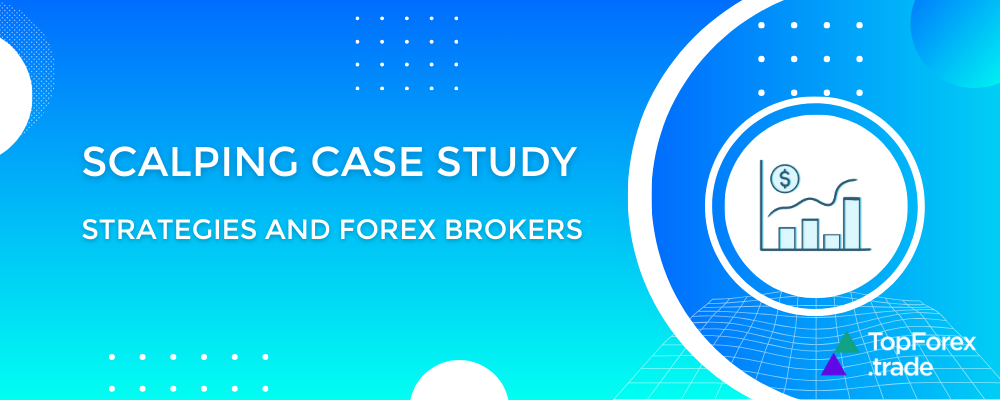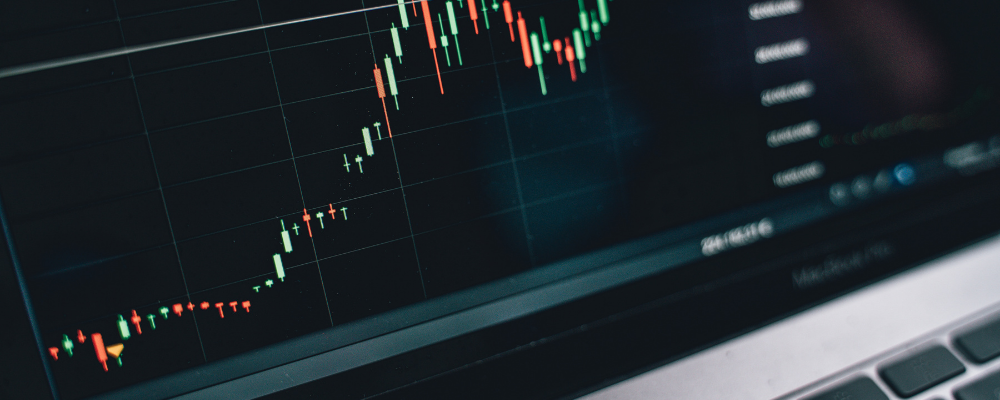Everything you need to know about FX scalping and brokers

Scalping in FX trading is a fast-paced strategy focused on making quick profits from small price movements. Traders execute multiple trades in a short time, requiring precision and discipline. In this case study, we’ll explain what scalping is, share trading examples, and offer pro tips to help you master the strategy.
What is scalping in FX trading?
At its core, scalping is about quick, short-term trades. Traders using this strategy rely on technical indicators and rapid decision-making to take advantage of minute price fluctuations. Scalpers aim for a high win rate by targeting small profits, usually ranging from a few pips to a dozen at most. Because the trades are so short-lived, scalpers often make dozens of trades in a single day.
This method can be incredibly effective in liquid markets like the forex market, where price movements are frequent and there’s always activity. However, it’s not for everyone—it requires intense focus and discipline, along with the ability to manage risk effectively.
Popular FX pairs for scalping
Scalpers should focus on liquid pairs with tight spreads and frequent price movement. Here are some popular FX pairs:
- EUR/USD: Highly liquid with tight spreads, offering opportunities in both European and U.S. sessions.
- GBP/USD: Volatile with potential for quick profits, but requires close monitoring of price action.
- USD/JPY: Liquid with smooth, predictable price movements, ideal for scalping.
- AUD/USD: Popular in the Asia-Pacific session, perfect for smaller price shifts.
- USD/CHF: Stable price action and tight spreads, making it great for scalping.
- EUR/GBP: Less volatile but offers consistent movements for those preferring smaller shifts.
- USD/CAD: Popular in North American hours, influenced by oil prices for predictable movement.
NOTE: You can also explore information about scalping in the educational sections of trusted FX brokers like XTB.

Click the button to get the verified link and avoid scammers.
Scalping trading examples

Let’s look at a couple of examples to understand better how scalping works in practice.
Example 1️⃣: EUR/USD Scalping A scalper spots a short-term upward trend in the EUR/USD pair. The price of EUR/USD is moving between 1.1200 and 1.1210, and the scalper enters a buy trade when the price hits 1.1205. After holding the position for a few minutes, the price moves up by 5 pips to 1.1210, and the scalper exits. This small profit is compounded through frequent trades, aiming for dozens of small gains throughout the day.
Example 2️⃣: GBP/USD Scalping with the MACD A trader uses the MACD (Moving Average Convergence Divergence) indicator to spot a short-term entry point for the GBP/USD pair. When the MACD shows a bullish crossover, the scalper enters a long position at 1.3050. After a few minutes, the price rises by 6 pips, and the trader exits the position, locking in the profit before the trend reverses.
🎯Pro tips for scalping
- Use tight spreads
Scalpers need quick entries and exits, so choose brokers with low spreads to reduce trade costs, especially during active market hours.
✍🏻For example, if you’re trading EUR/USD, a broker with a 0.1 pip spread allows you to enter and exit more efficiently, maximizing small profit margins. - Leverage technical indicators
Tools like moving averages, RSI, and MACD help scalpers spot entry and exit points.
✍🏻For instance, if the RSI drops below 30 (oversold) and then rises, it could signal a buy opportunity. Similarly, when the MACD line crosses above the signal line, it might indicate a strong buy trend. - Focus on liquidity
Scalping works best in liquid markets with frequent price changes and minimal slippage.
✍🏻For example, EUR/USD and GBP/USD are perfect for scalping because of their high liquidity, enabling quick trades without significant price gaps between your entry and exit. - Manage risk with stop-loss orders
Since scalping is high-risk, always set tight stop-loss orders to limit losses.
✍🏻For example, if you’re trading USD/JPY at 110.20 and set a stop-loss at 110.10, you ensure that if the price moves against you, your loss is limited to 10 pips. - Practice with a demo account
Start with a demo account to refine your skills.
✍🏻For instance, if you’re testing a strategy using the 5-minute chart and 10-period EMA crossover, a demo account lets you practice risk-free until you get comfortable with the strategy.
Pro tip: It’s important to test scalping strategies on demo accounts with reputable brokers to ensure they perform as expected before using them in live trading.
Technical indicators for scalping and how to use them
Profitable scalping relies heavily on technical analysis and indicators to make quick decisions. Here’s how to use the most commonly applied technical indicators for scalpers:
1. Moving Averages (MA). Moving averages are one of the simplest yet most effective tools for scalpers. The Exponential Moving Average (EMA) is favored because it reacts quickly to price changes. For scalping, the 5-period EMA and 10-period EMA are commonly used. Here’s how to use them:
- ➡️ Entry signal: Look for the price to cross above or below the EMA line. For a buy, enter when the price crosses above the EMA. For a sell, enter when the price crosses below the EMA.
- ⬅️ Exit signal: You can exit when the price moves back in the opposite direction from the EMA.
2. Relative Strength Index (RSI). The RSI helps identify overbought and oversold conditions. The typical thresholds are 70 for overbought and 30 for oversold.
- ➡️ Entry signal: Buy when the RSI drops below 30 (oversold) and starts turning upwards. Sell when the RSI rises above 70 (overbought) and starts turning down.
- ⬅️ Exit signal: Exit when the RSI moves back into neutral territory (around 50) or reaches extreme levels.
3. Moving Average Convergence Divergence (MACD). The MACD helps identify momentum shifts and trend reversals. It consists of two lines: the MACD line and the signal line.
- ➡️ Entry signal: When the MACD line crosses above the signal line (bullish crossover), enter a buy position. When the MACD line crosses below the signal line (bearish crossover), enter a sell position.
- ⬅️ Exit signal: Exit the trade when the MACD line crosses back over the signal line in the opposite direction.
4. Bollinger Bands. Bollinger Bands consist of three lines: the middle band (simple moving average), the upper band, and the lower band. The bands expand and contract based on market volatility.
- ➡️ Entry signal: If the price touches the upper band and starts to reverse, consider selling. If the price touches the lower band and starts to reverse, consider buying.
- ⬅️ Exit signal: Exit the trade when the price reaches the middle band or shows signs of consolidating.
5. Stochastic Oscillator. The Stochastic Oscillator is a momentum indicator that helps spot overbought and oversold conditions.
- ➡️ Entry signal: When the %K line crosses above the %D line in oversold conditions (below 20), enter a buy. When the %K line crosses below the %D line in overbought conditions (above 80), enter a sell.
- ⬅️ Exit signal: Exit when the %K and %D lines cross in the opposite direction.
Case study: real-world FX scalping example

Let’s dive into a case study where scalping was used effectively.
Scenario: A trader specializes in scalping the EUR/USD pair during the London trading session. They use a combination of the 1-minute and 5-minute charts, along with the RSI indicator, to spot overbought and oversold conditions.
- Trade 1️⃣: The trader notices the RSI drops below 30, signaling an oversold condition. The price is at 1.1180, and the trader enters a buy position. The price rises by 7 pips to 1.1187, and the position is closed for a small profit.
- Trade 2️⃣: A few minutes later, the RSI goes above 70, indicating an overbought condition. The trader enters a short position at 1.1200. The price drops by 6 pips to 1.1194, and the trader exits for another small profit.
The trader executes 30 similar trades throughout the session, each generating small profits. By the end of the day, the trader has accumulated a significant total profit, despite each trade being low-risk and short-lived.
The best brokers for Forex scalping
To effectively implement scalping strategies, choosing the right broker is essential. The best Forex brokers for scalping provide tight spreads, fast execution, and minimal slippage, ensuring smooth and efficient trade execution. Below is a list of top brokers that offer the ideal conditions for scalping, including competitive fees, advanced trading platforms, and reliable liquidity.
XTB FX trading
Scalping requires a broker with tight spreads, fast execution, and minimal slippage to make frequent trades profitable. The right choice can make all the difference in maximizing opportunities. One standout option is XTB, a trusted broker with a strong presence in over 190 countries. Regulated by top-tier authorities like the FCA, CySEC, and KNF, XTB is known for its security and transparency. With powerful trading platforms like xStation and MetaTrader 4, it offers seamless access to a wide range of currency pairs. Whether you’re a beginner or a seasoned trader, XTB provides flexible account options, including Standard and swap-free accounts, making it a great choice for scalping. Below, we’ve listed the best brokers that offer ideal conditions for scalpers.
BlackBull FX trading
BlackBull Markets is a top-tier Forex and CFD broker that delivers a seamless trading experience through its advanced MT4 and MT5 platforms. These platforms come packed with powerful analytical tools, enabling traders to refine their strategies and execute trades with precision. Known for its strong focus on user experience, BlackBull Markets offers exceptional customer support and educational resources, making it a great choice for both beginners and seasoned traders. Security and transparency are at the core of its operations, providing a trustworthy trading environment for those looking to sharpen their skills and navigate the ever-evolving Forex market.
Exness FX trading
Exness is a top choice for traders, offering a diverse range of assets, including currency pairs, commodities, indices, and cryptocurrencies. Regulated by the FCA in the UK and CySEC in Cyprus, it provides a secure and transparent trading environment. With competitive spreads on both Standard and Professional accounts, Exness accommodates different trading styles. Traders can rely on 24/7 customer support via email, live chat, and phone, ensuring assistance whenever needed. Offering MetaTrader 4 (MT4) and MetaTrader 5 (MT5), Exness delivers a seamless and feature-rich trading experience, making it a strong option for both beginners and experienced traders.
XM FX trading
XM Group is a trusted Forex and CFD broker known for its low minimum deposit and strong regulatory oversight from CySEC and the FCA, ensuring a secure trading environment. With two-step authentication, traders benefit from added security. XM offers access to a wide range of assets, including currency pairs, stocks, commodities, and indices, making it a versatile choice for both beginners and experienced traders. Featuring user-friendly platforms, competitive spreads, and multiple account options, XM provides a seamless trading experience tailored to different trading styles.
HF Markets (HotForex) FX trading
HF Markets (HotForex) is a globally recognized broker offering a broad range of trading instruments, including forex, commodities, indices, and cryptocurrencies. Regulated by respected authorities such as the FCA and CySEC, it ensures a secure and transparent trading environment. Known for its powerful MetaTrader 4 (MT4) and MetaTrader 5 (MT5) platforms, HF Markets caters to various trading styles with competitive spreads, flexible leverage, and diverse account options, including swap-free accounts. With outstanding customer support, extensive educational resources, and a focus on reliability, HF Markets is an excellent choice for traders of all experience levels.
Related articles:
Scalping in FX trading - FAQ